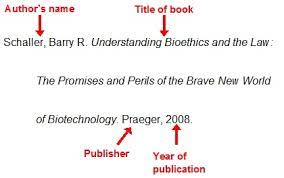Citations are an essential part of academic writing. They provide a way for writers to give credit to the sources they use in their work and allow readers to locate those sources for further research. A citation typically includes several pieces of information, including the author’s name, the title of the work, and the date of publication. One critical piece of information that is often included in a citation is the publisher. In this article, we will explore what the publisher is in a citation and why it is important.
What is the Publisher?
The publisher is the entity responsible for producing and distributing a work. In the case of books, the publisher is typically a company that specializes in publishing books. For academic articles, the publisher may be a scholarly journal or academic press. The publisher’s name is usually listed on the title page of a book or at the top of an article.
Why is the Publisher Important?
The publisher is an essential piece of information in a citation because it helps readers locate the source. Knowing the publisher can help readers identify the type of source they are looking at and determine its credibility. For example, if a book is published by a reputable academic press, readers can assume that it has undergone a rigorous peer-review process and is likely to be a reliable source of information. On the other hand, if a book is self-published, readers may need to be more cautious about its accuracy and reliability.
Additionally, knowing the publisher can help readers locate the source more easily. If a reader wants to find a particular book or article, knowing the publisher can help them search for it more effectively. Many libraries and databases allow users to search by publisher, making it easier to find specific sources.
Where to Find Publisher Information
As mentioned earlier, the publisher’s name is usually listed on the title page of a book or at the top of an article. In a book citation, the publisher’s name is typically followed by the location of the publisher and the date of publication. For example:
Smith, J. (2019). The History of Art. New York: Random House.
In this example, Random House is the publisher, New York is the location of the publisher, and 2019 is the date of publication.
In an article citation, the publisher’s name is usually followed by the title of the journal, the volume number, and the issue number. For example:
Jones, S. (2020). The Effects of Climate Change on Biodiversity. Environmental Science & Technology, 54(3), 123-135.
In this example, Environmental Science & Technology is the name of the journal, and the publisher is not explicitly listed. However, readers can assume that the publisher is the American Chemical Society, which is the organization that publishes the journal.
Conclusion
In conclusion, the publisher is an essential piece of information in a citation. It helps readers locate sources and determine their credibility. Knowing where to find publisher information and how to include it in a citation is crucial for academic writers and researchers. By understanding the role of the publisher in a citation, writers can ensure that their work is properly documented and readers can easily locate and evaluate their sources.
